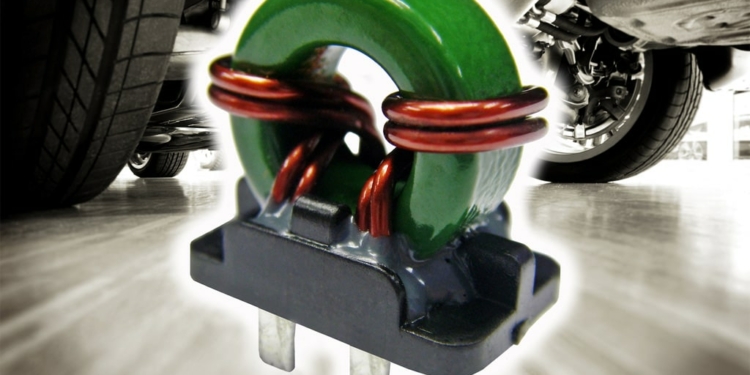source: TT Electronics news
Woking, UK, 7 March 2018 – TT Electronics, a global provider of engineered electronics for performance critical applications, today launched the HA19 series of common mode chokes for use in electronic power steering (EPS) noise suppression applications. With high performance and AECQ-200 certification, the HA19 series devices are ‘automotive ready’ for the new generation of motor vehicles.
Every EPS system requires proper EMI (electromagnetic interference) control with a common mode choke (CMC) and/or a differential mode choke (DMC) serving this function. With the growing shift to EVs and PHEVs, and the accelerated incorporation of electronic components in automobiles, noise suppression has become increasingly important in order to ensure EMI compliance. TT Electronics’ HA19 series common mode chokes are designed with the company’s extensive expertise and excellence in noise suppression performance in chokes that the company has supplied for EPS)applications over the last 15 years.
The HA19 series is comprised of three parts with standard inductance values, ranging from 11µH to 75µH, which have been demonstrated to be ideal for reducing line-conducted inference in the circuitry. The devices offer high reliability and superior current handling from 26.5A to 44A (and even higher over-current withstanding) in a rugged construction. Their wide -40 to 125°C operating temperature range and AEC-Q200 certification make them ideal for high stress automotive environments. The HA19 common mode chokes are lead-free and comply with EU Directive 2011/65/EU (RoHS2) requirements.
The HA19 series embraces TT Electronics’ holistic approach to specialised component design to create products that are feature rich, safe, highly efficient and reliable. The result is design and manufacturing solutions for magnetics that have a systematic adherence to the safety standards and quality required by the automotive industry. The HA19 series is a proven solution to eliminate noise emission induced by high radiated frequencies and low conducted frequencies in system circuitry, enabling EPS system designers to improve EMI robustness, ensuring safe vehicle operation.
In line with TT Electronics’ purpose to solve its customers’ toughest electronics challenges by engineering smart solutions together, the company offers its comprehensive design expertise in customizing the HA19 to meet customers’ individual system requirements.


































